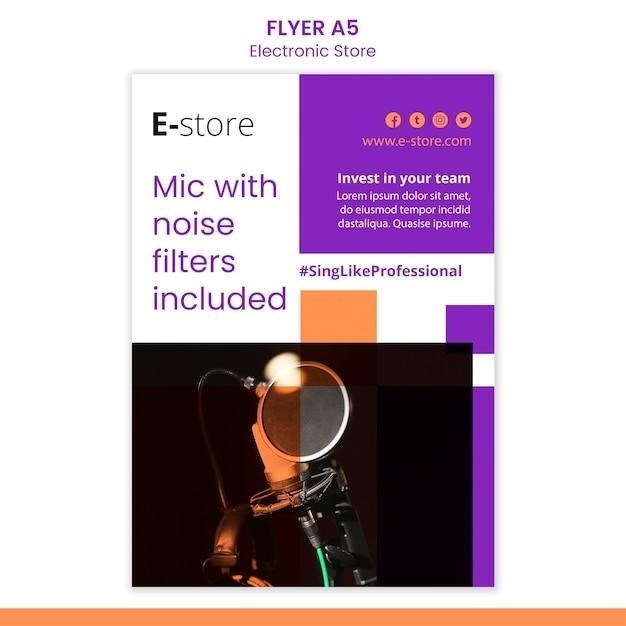The Johari Window Model is a powerful tool for self-awareness and personal development‚ offering insights into how individuals perceive themselves and others․ Downloadable as a PDF‚ it provides a structured approach to understanding interpersonal dynamics‚ fostering open communication‚ and enhancing team collaboration․ Widely used in HR‚ education‚ and leadership training‚ this model helps individuals and teams gain deeper self-awareness and improve relationships․
What is the Johari Window Model?
The Johari Window Model is a psychological tool designed to enhance self-awareness and interpersonal understanding․ Created by Joe Luft and Harry Ingham‚ it combines their first names to form “Johari․” The model consists of four quadrants: the Open Area (known to self and others)‚ the Blind Area (unknown to self but known to others)‚ the Hidden Area (known to self but hidden from others)‚ and the Unknown Area (unknown to both self and others)․ This framework helps individuals and teams identify strengths‚ weaknesses‚ and areas for improvement․ By using a Johari Window PDF template‚ users can visually map their self-perception and others’ perceptions‚ fostering personal growth and open communication․
Importance of Self-Awareness and Personal Development
Self-awareness is the cornerstone of personal growth‚ enabling individuals to understand their strengths‚ weaknesses‚ and emotions․ The Johari Window Model emphasizes this by providing a structured approach to self-reflection and interpersonal understanding․ By identifying what is known and unknown to oneself and others‚ individuals can address blind spots and hidden areas‚ fostering personal development․ This model encourages open communication‚ trust‚ and collaboration‚ which are essential for building strong relationships․ Regular use of the Johari Window‚ often through a PDF template‚ helps individuals and teams grow emotionally and professionally‚ leading to improved decision-making and problem-solving skills․ Self-awareness is key to unlocking potential and achieving personal and professional success․
Overview of the Johari Window PDF
The Johari Window PDF is a practical tool designed to help individuals and teams visualize and analyze their self-awareness and interpersonal relationships․ Available for free download‚ these templates provide a structured format with four quadrants‚ allowing users to assess what is known and unknown about themselves and others․ Many platforms‚ such as FigJams‚ Creately‚ and Canva‚ offer customizable Johari Window templates tailored for individual or team use․ These PDFs are ideal for real-time collaboration‚ enabling teams to work together remotely on shared online whiteboards․ By using these resources‚ individuals can gain deeper insights into their strengths‚ weaknesses‚ and communication styles‚ fostering personal and professional growth․
History and Background of the Johari Window Model
Developed by Joe Luft and Harry Ingham‚ the Johari Window Model combines their names to create a self-awareness tool‚ evolving from their 1955 publication to aid personal and team development․
Creators: Joe Luft and Harry Ingham
Joe Luft and Harry Ingham are the creators of the Johari Window Model‚ a groundbreaking tool for self-awareness and interpersonal communication․ Their collaboration led to the development of this model‚ which combines their first names to form “Johari․” Initially introduced in the 1950s‚ their work laid the foundation for understanding individual and team dynamics․ The model emphasizes the importance of feedback and self-reflection‚ making it a cornerstone in personal development and team management․ Their innovative approach has been widely recognized‚ and the Johari Window remains a popular resource in HR‚ education‚ and leadership training․ Its availability as a PDF template has further enhanced its accessibility and practical application․
Origin and Evolution of the Model
The Johari Window Model was first introduced in the 1950s by psychologists Joe Luft and Harry Ingham․ The name “Johari” is derived from combining their first names․ Initially‚ the model was presented as a simple grid with four quadrants‚ designed to help individuals understand themselves and others better․ Over time‚ the model has evolved‚ with various interpretations and applications emerging․ Its core concept remains unchanged‚ focusing on self-awareness‚ personal growth‚ and interpersonal communication․ The availability of the Johari Window as a PDF has made it more accessible‚ allowing individuals and teams to use it in diverse settings‚ from HR and education to leadership development․
Initial Publications and Recognition
The Johari Window Model was first introduced by Joe Luft and Harry Ingham in the 1950s‚ with early publications referring to it as “JoHari․” The model gained recognition for its simplicity and effectiveness in fostering self-awareness and interpersonal communication․ Initially‚ it was used in psychological and educational settings but soon expanded to HR and team management․ The model’s popularity grew as it became a widely accepted tool for personal and professional development․ Today‚ the Johari Window is available as a PDF template‚ making it easily accessible for individuals and teams to use in various contexts․ Its enduring relevance highlights its value in understanding human behavior and improving relationships․
The Four Quadrants of the Johari Window
The Johari Window Model consists of four quadrants: Open‚ Blind‚ Hidden‚ and Unknown․ It helps individuals understand self-perception and others’ views‚ available as a PDF tool for personal development․
The Open Area (Quadrant 1)
The Open Area‚ or Quadrant 1‚ represents the traits‚ feelings‚ and behaviors known to both the individual and others․ It includes information that is openly shared and understood‚ fostering trust and clear communication․ This quadrant is essential for building strong relationships and effective teamwork․ By expanding this area‚ individuals can enhance their self-awareness and interpersonal connections․ Tools like the Johari Window PDF template help visualize this quadrant‚ allowing users to identify what is openly known and work on reducing blind spots; Regular feedback and open dialogue are key to maximizing the Open Area‚ leading to personal growth and improved collaboration in professional and personal settings․
The Blind Area (Quadrant 2)
The Blind Area‚ or Quadrant 2‚ consists of traits‚ feelings‚ or behaviors that others can see but the individual is unaware of․ This quadrant highlights the importance of feedback in self-awareness‚ as it often contains blind spots that others notice but the person does not․ Reducing this area requires seeking honest feedback from trusted individuals‚ which can be facilitated through tools like the Johari Window PDF template․ By addressing these unseen aspects‚ individuals can gain new insights‚ improve their self-perception‚ and enhance their interpersonal relationships․ Regularly soliciting feedback and being open to constructive criticism are key to minimizing the Blind Area and fostering personal growth․ This quadrant emphasizes the value of external perspectives in self-development․

The Hidden Area (Quadrant 3)
The Hidden Area‚ or Quadrant 3‚ represents aspects of oneself that are known to the individual but hidden from others․ This quadrant includes feelings‚ thoughts‚ or experiences that a person consciously or unconsciously keeps private․ While this area can serve as a protective mechanism‚ it can also limit personal and professional growth by preventing authentic connections․ To reduce this quadrant‚ individuals must engage in selective disclosure‚ sharing appropriate information to build trust and deepen relationships․ Tools like the Johari Window PDF template can guide this process‚ helping individuals decide what and when to reveal․ Balancing privacy with openness is key to leveraging the Hidden Area for personal and interpersonal development․ This quadrant underscores the importance of self-reflection and intentional communication in fostering meaningful connections․
The Unknown Area (Quadrant 4)
The Unknown Area‚ or Quadrant 4‚ represents aspects of oneself that are neither known to the individual nor to others․ This quadrant includes unconscious feelings‚ motives‚ or abilities that have not yet been discovered․ It can also involve untapped potential or unresolved past experiences that influence behavior without awareness․ Reducing this quadrant requires self-reflection‚ exploration‚ and feedback from others․ Tools like the Johari Window PDF template can help individuals identify and address these unknown elements‚ fostering personal growth and self-awareness․ By exploring this quadrant‚ individuals can uncover hidden strengths and gain a deeper understanding of themselves‚ leading to improved relationships and decision-making․ This area emphasizes the importance of continuous learning and self-discovery in personal and professional development․

Practical Applications of the Johari Window Model
The Johari Window Model is widely used for improving self-awareness‚ enhancing team communication‚ and leadership development․ It also aids in conflict resolution by fostering open dialogue and trust․ PDF templates enable real-time collaboration‚ making it a versatile tool for personal and professional growth․
Improving Self-Awareness
The Johari Window Model is a powerful tool for improving self-awareness‚ helping individuals understand their strengths‚ weaknesses‚ emotions‚ and behaviors․ By using a Johari Window PDF template‚ users can assess how they perceive themselves and how others see them․ This process involves identifying descriptors that align with their self-image and those that others recognize but they may not․ The model encourages individuals to seek feedback and reflect on their personal traits‚ fostering a deeper understanding of their personality and interpersonal dynamics; Regular use of the Johari Window can lead to personal growth and more effective relationships․ Templates from platforms like FigJams‚ Creately‚ and Canva simplify this process‚ making it accessible for self-reflection and real-time collaboration․
Enhancing Team Communication
The Johari Window Model is a valuable tool for enhancing team communication‚ fostering open dialogue and collaboration․ By using a Johari Window PDF template‚ teams can identify and discuss blind spots and hidden areas‚ promoting mutual understanding․ This process encourages team members to share feedback and insights‚ breaking down barriers and building trust․ Tools like FigJams‚ Creately‚ and Conceptboard offer templates for real-time collaboration‚ allowing teams to work together remotely․ Regular use of the Johari Window helps teams align their perceptions‚ improve interpersonal dynamics‚ and strengthen overall communication․ This leads to more effective problem-solving and a more cohesive team environment‚ making it an essential resource for team management and leadership development․
Leadership Development
The Johari Window Model is a powerful tool for leadership development‚ enabling leaders to gain deeper self-awareness and improve their interpersonal skills․ By using a Johari Window PDF template‚ leaders can assess their strengths‚ weaknesses‚ and areas for growth․ This model helps leaders identify their open area‚ blind area‚ hidden area‚ and unknown area‚ fostering a better understanding of themselves and how others perceive them․ Tools like Canva and Miro offer customizable templates for self-assessment and team feedback‚ promoting open communication and trust․ Regular use of the Johari Window enhances a leader’s ability to make informed decisions‚ build stronger relationships‚ and create a more collaborative and growth-oriented team culture․
Conflict Resolution Strategies
The Johari Window Model is a valuable tool for conflict resolution‚ helping individuals and teams identify and address misunderstandings․ By using a Johari Window PDF template‚ participants can map out their perceptions and those of others‚ revealing blind spots and hidden areas that often lead to conflicts․ This model encourages open dialogue‚ fostering trust and collaboration․ Tools like FigJams and Conceptboards offer interactive templates for real-time feedback‚ enabling teams to address issues constructively․ Regular use of the Johari Window promotes empathy and understanding‚ reducing friction and improving communication․ It empowers individuals to resolve conflicts by aligning self-perception with others’ perspectives‚ creating a harmonious and productive environment․

How to Create a Johari Window PDF
Download customizable Johari Window templates from platforms like FigJams or Canva․ Personalize the template with names and details for individual or team assessments․ Use online tools like Conceptboards for real-time collaboration and feedback‚ ensuring a tailored approach to self-awareness and communication․
Downloading Johari Window Templates
Downloading Johari Window templates is straightforward‚ with options available from platforms like FigJams‚ Creately‚ and Canva․ These templates are designed for various contexts‚ including team assessments and individual use․ Many are free and customizable‚ allowing users to add names and specific details․ Some platforms‚ like Conceptboards‚ offer shared online whiteboards for real-time collaboration․ Additionally‚ websites like Collaboards provide printable templates‚ making it easy to conduct analyses in both digital and physical formats․ These resources are ideal for enhancing self-awareness‚ improving communication‚ and fostering trust within teams․ By leveraging these templates‚ individuals and groups can gain deeper insights into their dynamics and relationships․
Customizing the Template for Individual or Team Use
Customizing Johari Window templates allows users to tailor the model to specific needs‚ whether for personal growth or team development․ Platforms like Creately and Canva offer editable templates where names‚ descriptors‚ and relevant details can be added․ For teams‚ Conceptboards enables real-time collaboration‚ making it easy to adapt the template during group sessions․ Individuals can personalize the model by selecting descriptors that align with their self-assessment goals․ Customization enhances the model’s effectiveness‚ ensuring it addresses unique scenarios and fosters meaningful insights․ By adapting the template‚ users can focus on areas requiring improvement‚ promoting self-awareness and stronger interpersonal connections․ This flexibility makes the Johari Window a versatile tool for both personal and professional development․
Using Online Tools for Real-Time Collaboration
Online tools like Conceptboards and Miro enable real-time collaboration with the Johari Window model‚ allowing teams to work together seamlessly․ These platforms provide shared whiteboards where participants can input their perceptions and feedback simultaneously․ Features like drag-and-drop descriptors and customizable quadrants make it easy to adapt the model during group sessions․ Real-time collaboration fosters open communication and accelerates the self-awareness process․ Tools such as Creately also offer pre-built templates‚ simplifying the setup process․ This approach ensures that all team members can contribute actively‚ regardless of their location‚ making it an ideal solution for remote teams․ By leveraging these tools‚ teams can gain deeper insights into their dynamics and improve collaboration effectively․

Benefits of the Johari Window Model
The Johari Window Model fosters trust and open communication‚ enhancing self-awareness and team productivity․ It promotes deeper understanding of oneself and others‚ improving collaboration and interpersonal relationships effectively․
Building Trust and Open Communication
The Johari Window Model is a catalyst for fostering trust and open communication within teams․ By encouraging individuals to share their thoughts and feelings‚ it bridges gaps between self-perception and others’ perspectives․ This transparency helps teams collaborate more effectively‚ reducing misunderstandings․ The model’s structured approach ensures that feedback is constructive‚ creating a safe environment for honest dialogue․ Tools like FigJams and Creately’s templates further enhance this process‚ allowing real-time collaboration and visualization of interpersonal dynamics․ As trust grows‚ so does the team’s ability to address blind spots and hidden areas‚ leading to stronger relationships and improved productivity․ This foundation of trust is essential for long-term success in both personal and professional settings․
Increasing Personal and Team Productivity
The Johari Window Model significantly enhances personal and team productivity by fostering self-awareness and improving interpersonal dynamics․ By identifying blind spots and hidden areas‚ individuals can address inefficiencies and align their efforts more effectively․ Teams benefit from clearer communication‚ reducing misunderstandings and overlapping work․ Tools like Creately’s and Canva’s Johari Window templates enable real-time collaboration‚ allowing teams to visualize and address productivity barriers collectively․ This structured approach ensures that tasks are allocated based on strengths‚ weaknesses‚ and shared knowledge‚ leading to better time management and goal alignment․ Ultimately‚ the model empowers individuals and teams to work more efficiently‚ driving overall productivity and success․
Facilitating Personal Growth
The Johari Window Model is a powerful catalyst for personal growth‚ enabling individuals to gain deeper insights into their strengths‚ weaknesses‚ and areas for improvement․ By exploring the four quadrants‚ individuals can identify blind spots and hidden traits‚ fostering self-awareness and emotional intelligence․ Tools like FigJams and Creately’s templates provide structured frameworks for self-assessment and reflection․ The model encourages individuals to seek feedback and disclose information‚ promoting authenticity and personal development․ Regular use of the Johari Window PDF helps individuals set realistic goals and track progress‚ leading to continuous improvement․ This iterative process empowers individuals to unlock their potential‚ fostering a culture of growth and self-improvement․

Limitations and Criticisms of the Model
The Johari Window Model relies heavily on honest feedback‚ which can be subjective and influenced by personal biases․ Its effectiveness depends on open communication‚ making it less impactful in environments where trust is lacking․ Additionally‚ the model’s simplicity may oversimplify complex interpersonal dynamics‚ and its outcomes can vary based on individual willingness to disclose information․ Despite its benefits‚ these limitations highlight the need for a supportive context to maximize its potential․
Subjective Nature of Feedback

The Johari Window Model’s effectiveness is influenced by the subjective nature of feedback‚ as perceptions of self and others can vary greatly․ Feedback is often colored by personal biases‚ emotions‚ and experiences‚ leading to potential misinterpretations․ This subjectivity can result in inaccurate self-assessments or mismatched views between individuals․ For instance‚ what one person perceives as a strength‚ another might see as a weakness․ Additionally‚ the model’s reliance on honest communication means that the quality of feedback directly impacts its usefulness․ Without a neutral or objective framework‚ the insights gained may be skewed‚ highlighting the importance of a supportive and trusting environment to maximize the model’s benefits and ensure constructive dialogue․
Dependence on Honest Communication
The Johari Window Model heavily relies on honest communication to function effectively․ Feedback from others is crucial for identifying blind spots and hidden areas‚ but its accuracy depends on the sincerity of the participants․ Without truthful input‚ the model’s effectiveness diminishes‚ as individuals may not gain authentic insights into their strengths and weaknesses․ This dependence on honest communication can be challenging‚ as people may withhold feedback due to fear of conflict or judgment․ Creating a safe and trusting environment is essential to encourage open dialogue and ensure the model’s success․ Honest communication fosters trust‚ collaboration‚ and personal growth‚ making it a cornerstone of the Johari Window’s application in both personal and team settings․
Case Studies and Real-World Examples
The Johari Window Model is widely applied in HR and team management‚ as seen in Chew Han Guan’s use in HR․ It’s also used in education․
Application in HR and Team Management
The Johari Window Model is extensively used in HR and team management to enhance communication and trust․ Chew Han Guan‚ an HR manager‚ utilized it to benefit his team‚ demonstrating its effectiveness in fostering self-awareness․ By identifying blind spots and hidden areas‚ HR professionals can address interpersonal issues and improve team dynamics․ The model aids in leadership development‚ conflict resolution‚ and productivity enhancement․ HR teams often use downloadable PDF templates to conduct workshops‚ helping employees understand themselves and others better․ This tool is particularly valuable for team-building activities‚ promoting open dialogue and collaboration․ Its practical application makes it a cornerstone in modern HR practices‚ driving personal and team growth effectively․
Use in Educational Settings
The Johari Window Model is a valuable educational tool for fostering self-awareness and interpersonal understanding among students․ Educators use downloadable PDF templates to guide students in exploring their strengths‚ weaknesses‚ and hidden potentials․ By applying the model‚ students gain insights into how they are perceived by others‚ promoting self-reflection and personal growth․ Teachers also use it to create collaborative learning environments‚ encouraging open communication and empathy․ The model helps students develop essential life skills‚ such as conflict resolution and teamwork‚ making it a popular choice in educational settings․ Its simplicity and effectiveness make it a versatile resource for both classroom activities and individual development plans․

The Johari Window Model is a timeless tool for self-awareness and growth‚ offering insights into personal and interpersonal dynamics․ Its PDF availability makes it accessible for widespread use․
The Johari Window Model‚ created by Joe Luft and Harry Ingham‚ is a powerful tool for self-awareness and personal development․ It consists of four quadrants: Open‚ Blind‚ Hidden‚ and Unknown‚ helping individuals and teams understand themselves and others better․ The model emphasizes the importance of feedback and open communication to reduce blind spots and enhance collaboration․ Available as a downloadable PDF‚ it offers a structured approach to personal and professional growth․ Widely used in HR‚ education‚ and leadership training‚ the Johari Window fosters trust‚ improves relationships‚ and increases productivity․ Its simplicity and versatility make it a valuable resource for individuals and teams seeking to gain deeper insights into their dynamics and potential․
Final Thoughts on the Johari Window Model

The Johari Window Model remains a timeless and versatile tool for fostering self-awareness‚ improving communication‚ and enhancing team dynamics․ Its simplicity and effectiveness make it a valuable resource for personal and professional growth․ By providing insights into the four quadrants‚ it helps individuals and teams identify blind spots‚ build trust‚ and strengthen relationships․ The availability of the Johari Window as a downloadable PDF ensures accessibility and ease of use for various applications‚ from HR and education to leadership development․ This model continues to empower individuals and teams to achieve greater self-awareness and collaboration‚ making it an indispensable tool in modern professional and personal development․




